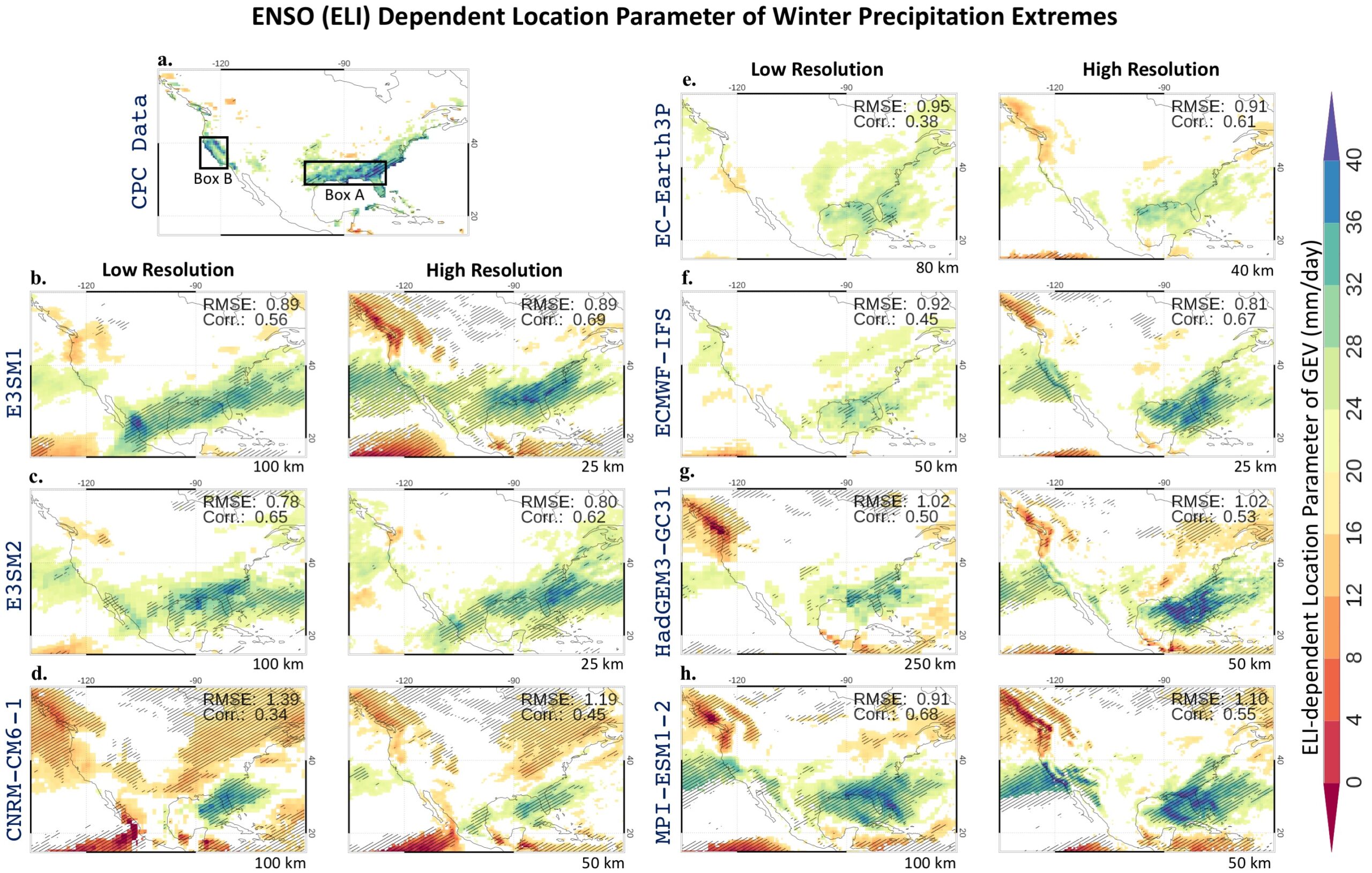ENSO Teleconnections to Extremes in High Resolution Earth System Models
The Science
El Niño–Southern Oscillation (ENSO), the irregular periodic variation in winds and sea surface temperatures (SST) over the tropical Pacific Ocean, is the largest source of climate predictability of many regions on sub-seasonal to inter-annual time-scales via atmospheric teleconnections. However, while differing in intensity and temporal evolution, each ENSO event also varies from others in its spatial pattern of SST anomalies over the tropical Pacific. This ENSO diversity thus also results in a diversity of ENSO impacts, limiting our predictive understanding of its teleconnections. For example, the 1997-98 strong El Nino event, which was associated with heavy winter season precipitation over California, exhibited strong warming over the Eastern Tropical Pacific. While the 2015-2016 strong El Nino event was marked by stronger warming over the Central Tropical Pacific with little impact on California.
This research evaluates the skill of seven state-of-the-art high-resolution (< 50km horizontal resolution) Earth System Models, including E3SMv1 and E3SMv2, at simulating the spatial diversity of ENSO-associated SST anomalies and its teleconnections to US winter season precipitation extremes.
The Impact
High-resolution models, including the high resolution version of E3SMv1 and the E3SMv2-North American Regionally Refined Model (E3SMv2-NARRM), are found to credibly capture diverse ENSO teleconnections as observed over Southeast and Southwest US. High-resolution models are generally found to improve upon their low-resolution counterparts largely due to the improved simulation of ENSO-dependent moisture transport, storm track activity, and vertical mass fluxes. The high resolution version of E3SMv1 shows substantial improvements over the low-resolution E3SMv1 over both regions. E3SMv2-NARRM also shows marginal improvements over Southwest US as compared to the low-resolution E3SMv2. The overall results suggest that using high-resolution models can enhance seasonal forecasting of regional water cycles.
Summary
ENSO comes in many flavors with diverse spatial patterns of ocean warming and associated heavy tropical rainfall over the deep tropical Pacific. This ENSO diversity is one of the major reasons behind our limited predictive understanding of its global impacts, particularly on climate extremes. A recent approach to characterize the full spectrum of ENSO using a simple index, namely the ENSO Longitudinal Index, shows promise in improving our understanding. The researchers use this new index to evaluate if new state-of-the-art high-resolution earth system models can capture the remote impacts of ENSO on US precipitation extremes in the winter using generalized extreme value theory. They find that the models can credibly simulate these ENSO teleconnections, across its many flavors, over the Southeast and Southwest US, and generally improve upon their low-resolution model counterparts (Fig. 1). This is due to improvements in ENSO-dependent moisture transport, storm track activity, and vertical mass fluxes in high-resolution models.
Publication
- Mahajan, Salil, Linsey S. Passarella, Qi Tang, Noel D. Keen, Peter M. Caldwell, Luke P. van Roekel, and Jean‐Christophe Golaz. 2023. “ENSO Diversity and the Simulation of Its Teleconnections to Winter Precipitation Extremes Over the US in High Resolution Earth System Models”. Geophysical Research Letters 50 (11). American Geophysical Union (AGU). doi:10.1029/2022gl102657.
Funding
- This work was supported by the Earth System Model Development program area of the Department of Energy, Office of Science, Biological and Environmental Research program.
Contact
- Salil Mahajan, Oak Ridge National Laboratory
This article is a part of the E3SM “Floating Points” Newsletter, to read the full Newsletter check:



